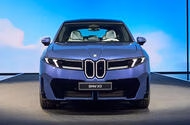Why Is BMW Taking a New Approach with Its Software-Defined Vehicles?
If you’ve been following the automotive world, you’ve probably noticed a big shift: cars are becoming more like computers on wheels. But with this leap comes a new set of headaches—glitches, buggy updates, and frustrating user experiences. BMW’s latest move with the new iX3 is a direct response to these challenges, and it’s worth digging into why they’re doing things differently.
For starters, BMW is building the entire software stack for its next-gen models in-house. That’s a bold move, especially when you consider that some major rivals have stumbled by outsourcing or splitting up their software development. The result? Delays, recalls, and unhappy customers. BMW’s Neue Klasse chief, Mike Reichelt, puts it simply: you can’t treat software as an afterthought if you want to lead in this new era.
What Makes the BMW iX3’s Software Platform Stand Out?
So, what’s actually new under the hood—or, more accurately, in the code—of the iX3? The SUV sits on a fresh electric vehicle platform, but the real story is the computing architecture. BMW has built this around four high-powered ‘supercomputer’ chips that handle everything from driving dynamics to infotainment.
This isn’t just about speed or raw power. It’s about integration. Every function in the car, whether it’s adaptive cruise control or the climate system, is now a blend of hardware and software. BMW’s engineers aren’t just mechanics or coders—they’re both. That’s a seismic shift in how cars are designed and built.
How Does BMW’s In-House Software Development Reduce Risk?
Let’s face it: nobody wants their car to freeze up like a smartphone. By developing the software stack themselves, BMW keeps tight control over quality and security. They’re not relying on third-party vendors who might not fully understand the nuances of their vehicles.
This approach also means BMW can respond faster to issues, roll out updates more smoothly, and tailor features to what drivers actually want. It’s a lesson learned from watching competitors struggle—think of the well-publicized software woes that have delayed launches or led to embarrassing recalls elsewhere in the industry.
Are There Real-World Benefits for Drivers?
Absolutely. For drivers, this means fewer bugs, faster updates, and a more seamless experience. Imagine getting a new feature overnight, or having your car’s performance improve with a simple download. That’s the promise of a truly software-defined vehicle, and BMW is betting big on delivering it.
There’s also a safety angle. With so many critical systems now digital—from braking to steering—reliability isn’t just a nice-to-have. It’s essential. By keeping development in-house, BMW can ensure that every line of code meets their exacting standards.
What Does This Mean for the Future of Car Engineering?
BMW’s strategy is already changing the company from the inside out. Reichelt points out that every engineer at BMW is now part of this digital transformation. In some departments, half the team is focused on electronics or software—a number that’s only growing.
This isn’t just about one model or one launch. It’s a cultural shift. The lines between hardware and software are blurring, and the most successful carmakers will be those who embrace this new reality. BMW’s move is a signal to the industry: adapt or risk falling behind.
Key Takeaways for Today’s Car Buyers
If you’re in the market for an electric SUV, the new BMW iX3 isn’t just another EV. It’s a glimpse into where the industry is headed. By taking control of its software destiny, BMW is aiming to deliver a more reliable, future-proof driving experience—one that learns, adapts, and improves over time.
The bottom line? The next time you hear about a car that updates itself overnight or adds new features with a tap, remember: it’s not magic. It’s the result of a company willing to rethink how cars are built from the ground up. And for BMW, that journey starts now.

